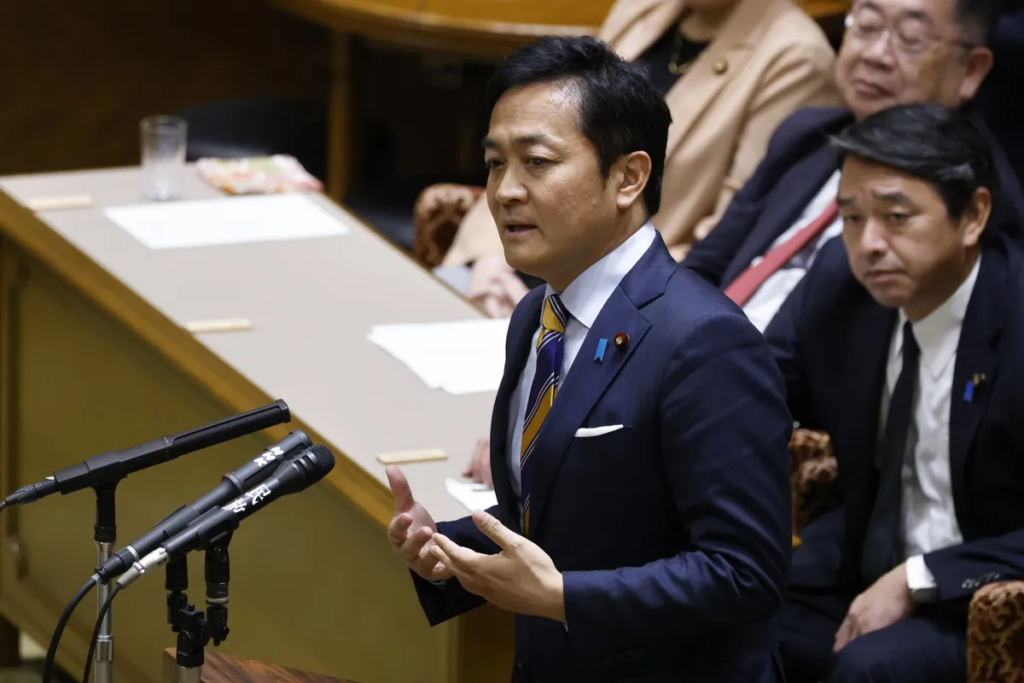- The Democratic Party is seen as the party most likely to cooperate with Ishiba’s Liberal Democratic Party
- LDP loses coalition majority after election, needs to seek support
Japanese Prime Minister Shigeru Ishiba may need to maintain his power by offering tax cuts for part-time workers in exchange for support from small opposition parties after his election defeat.

The Democratic Party is in the spotlight as Ishiba must seek new allies ahead of next month’s vote after the ruling coalition’s poor performance in Sunday’s election. The party, led by Yuichiro Tamaki, expanded its number of seats in parliament by campaigning on expanding the amount of tax-free income for part-time workers.
The DPJ’s 28 votes would be the easiest path to a majority for Ishiba’s Liberal Democratic Party and its coalition partner, Komeito, which are currently 18 seats short of the 233 required to pass legislation. Accepting some revenue losses in exchange for support may be the most realistic option, even though Japan faces the highest debt burden among developed countries.
Tamaki proposed raising the tax-free ceiling for part-time workers’ annual income from 1.03 million yen (about $6,700) to 1.78 million yen. He said the move could encourage part-time employees to work longer hours because they would not have to pay income tax until they reach a higher income threshold. Under his proposal, spouses of part-time workers would also continue to enjoy dependent tax benefits worth about 380,000 yen, which would further ease the fear of spouses working overtime.
Tamaki believes that raising the tax-free ceiling will help ease the country’s labor shortage while increasing household income. However, the negative impact is that the government’s tax revenue will decrease while government spending is still increasing and there is an additional budget plan.
“This is the most important item on the DPJ’s policy agenda, so there is a high possibility that Ishiba will accept the proposal,” said Mitsuya Miyamae, an economist at SMBC Nikko Securities.
Ishiba is ready to invite the DPJ to form a “partial coalition,” the Yomiuri Shimbun reported on Tuesday, citing an LDP official. However, Tamaki reiterated on Tuesday morning that he was not considering an alliance with Ishiba’s LDP, but he was open to discussions at the policy level. Tamaki said he plans to continue to put forward his candidacy in the Nov. 11 vote for prime minister.
“I’m not sure how big the impact of raising the tax-free cap will be, but it will certainly lead to lower tax revenues,” said Harumi Taguchi, chief economist at S&P Global Market Intelligence. “This will increase uncertainty in raising revenue for necessary spending.”
Nevertheless, raising the tax-free ceiling may be easier for the ruling coalition to accept than changing the tax rate, and may also be the most compromising policy option for Ishiba to retain his position as prime minister.
The Constitutional Democratic Party won the most seats among the opposition parties, with 148 seats, but its leader, former Prime Minister Yoshihiko Noda, has explicitly ruled out the possibility of a “grand coalition” with the LDP.
The Japan Restoration Party, which has 38 seats, has proposed setting the consumption tax at a uniform 8%, transforming Osaka into a unified metropolitan area and increasing the responsibilities of the Bank of Japan, which are more difficult. In addition, friction between the party and the Komeito party has also made cooperation more difficult.
The DP has rejected a request to meet with the Cadets, which had previously considered the possibility of forming a counter-coalition, according to broadcaster FNN, citing an anonymous source.








